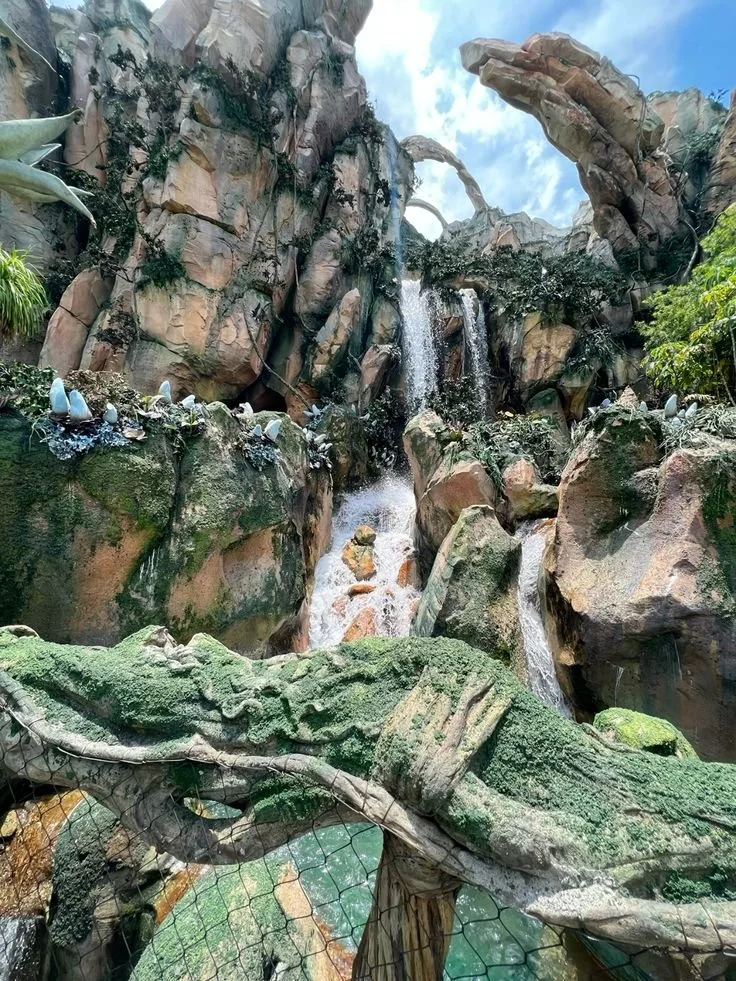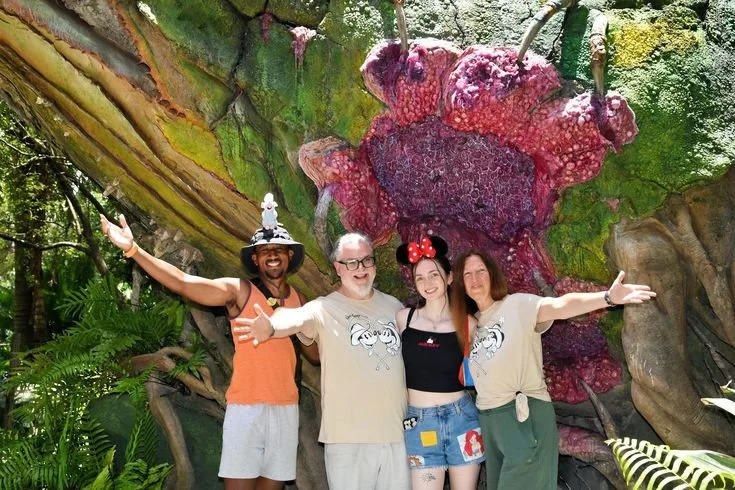Journey to the Valley of Mo’ara: Exploring Pandora at Animal Kingdom
Kaltxì! (kah-T’IH — hello). The moment you set foot in the Valley of Mo’ara at Disney’s Animal Kingdom, you’re no longer in Florida. You’re transported 4.4 light-years away, to Eywa’eweng (EY-wah-eh-weng), the lush moon of Pandora. Circling a massive gas planet with 12 other moons, Pandora is home to the Na’vi, ten-foot-tall beings who live in deep harmony with their land. Every step you take through this breathtaking valley is a reminder of why conservation and respect for nature are vital, both here and back on Earth.
The Story of Pandora’s Conservation
Long ago, the RDA (Resources Development Administration) invaded Pandora, seeking the rare mineral unobtanium. This metal has magnetic properties so powerful that it keeps the legendary ayram alusing (the floating mountains) suspended in midair. But the RDA’s reckless mining practices destabilized the land, causing mountains to crumble and ecosystems to falter.
In response, Marshall Lamm founded ACE (Alpha Centauri Expeditions) and PCI (Pandora Conservation Initiative). ACE now serves as your host and guide on Pandora, ensuring guests are cared for and educated about this extraordinary world. PCI works more closely with the Na’vi and Pandora’s wildlife, helping preserve habitats and facilitating unique guest experiences. Together, they remind us of the balance between exploration and respect for fragile ecosystems.
Plants of the Valley of Mo’ara
Pandora’s flora is unlike anything on Earth — not only for its size and bioluminescence (syuratau), but also for its vital role in keeping Pandora habitable:
Dapophet – A plant with healing properties, its stems store water, making it a portable hydration system. Think of it as Pandora’s aloe vera.
Episoth – The “Pandora Christmas Tree.” Its glowing ends shine at night, and its fruits explode when ripe, flinging sticky seeds far away so they don’t compete with the mother tree. Only three episoths exist in the Valley.
Flaska Reclinata – A massive plant that absorbs and purifies toxins, allowing humans to breathe on Pandora.
Goblin Thistle – With twisted trunks and bluish bioluminescent leaves, this “Grinch Tree” stands hunched and mysterious.
Spiny Whip – Collects rainwater and doubles as a bird bath for local wildlife.
Vein Pod – Acts as a sponge, filtering toxins and maintaining Pandora’s delicate atmospheric balance.
Puffball Tree – Towering over 15 meters, this tree detoxifies the soil and atmosphere. The Na’vi harvest it for food, both for themselves and their animals.
Creatures of Pandora
The Valley teems with life, from gentle herbivores to formidable predators:
Mountain Banshee (Ikran) – A breathtaking aerial predator with a wingspan of nearly 14 meters. Fiercely loyal once bonded, they are ridden only by the Na’vi.
Hexapede – A harmless six-legged creature with twin pivoting horns. Often prey, never predator.
Prolemuris (Syaksyuk) – Playful, social tree-dwellers with winglike membranes to leap between branches.
Viperwolf – Sleek, six-legged pack hunters with eerie coyote-like calls.
Fan Lizard – A small omnivore with a dazzling bioluminescent disk it can flare to glide away from predators.
Direhorse – The Na’vi’s six-legged riding animal, equipped with long antennae.
Each species, no matter how big or small, plays a critical role as a keystone in the balance of Pandora’s ecosystems — an important conservation lesson for us back on Earth.
Immersing Yourself in Na’vi Culture
The Na’vi live in deep connection with Eywa, the life force that binds all things. As a traveler to Pandora, learning even a few words of their language helps you show respect and immerse yourself in their culture:
Kaltxì (kahl-T’IH) — Hello
Irayo (ee-RAH-yo) — Thanks
Rutxe (roo-T’EH) — Please
Oeru syaw (WEH-roo syow) — My name is
Eywa ngahu (EY-wah NGAH-hoo) — Eywa be with you
Satu’li — Heritage
Ayram alusing — Floating mountains
Pongu — Party or gathering
Syuratau — Bioluminescence
Eywa’eweng — Pandora
Syaksyuk — Prolemuris
Sempul — Father
Sa’nok — Mother
Kiyevame — Goodbye (not final — “you will be brought back to me”)
Irrtoksi — Smile
Food and celebration are central to Na’vi life as well. Satu’li Canteen, once an RDA mess hall, has been transformed into a cultural hub. Its name, Satu’li, means “heritage,” and inside you’ll find relics of Na’vi warriors alongside meals inspired by their traditions. Nearby, Pongu Pongu — meaning “party party” — offers drinks and snacks for travelers.
A Living Message of Conservation
Every glowing plant, every soaring banshee, and every whispered Na’vi blessing in the Valley of Mo’ara carries a message: protect the environments that sustain us. Pandora reminds us of the power of keystone species, the fragility of ecosystems, and the deep relationship between people and nature.
As you wander beneath the floating mountains, breathe purified air from the flaska reclinata, and marvel at the bioluminescent forests, you’re reminded that Earth’s environments need the same care and respect. The Valley of Mo’ara is more than an otherworldly journey — it’s a call to action.
So next time you find yourself at Animal Kingdom, step into Pandora and leave with a newfound appreciation for the natural world. And when you part, remember their words: Kiyevame — not goodbye forever, but “you will be brought back to me.”
Eywa ngahu.




